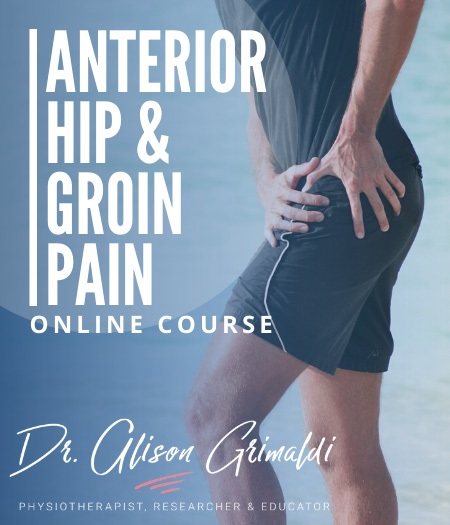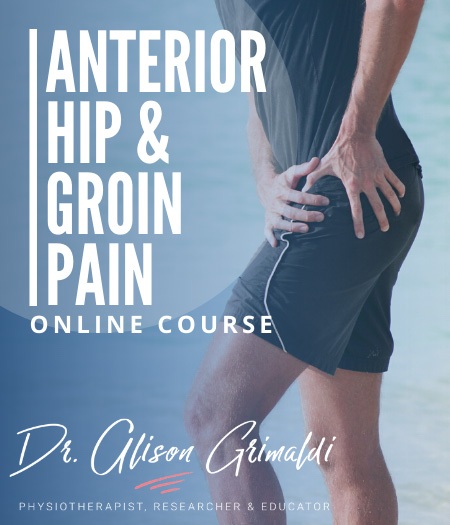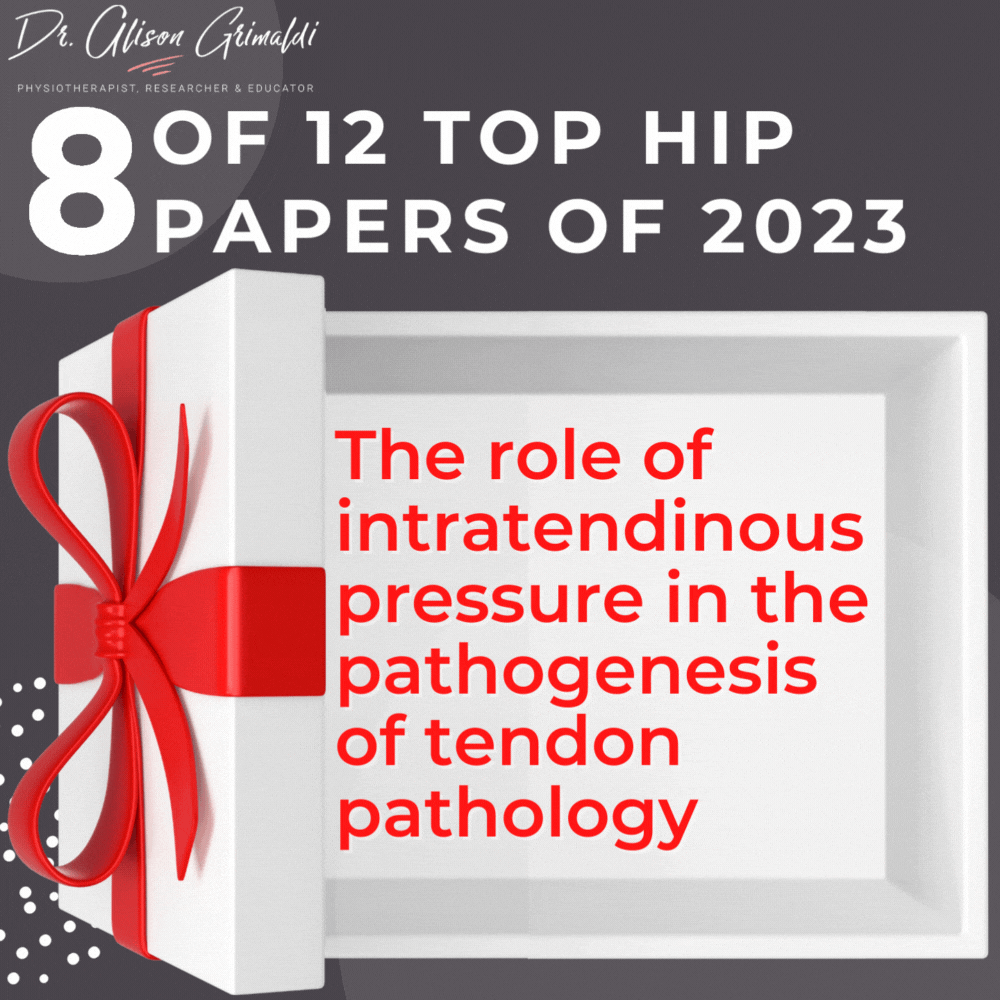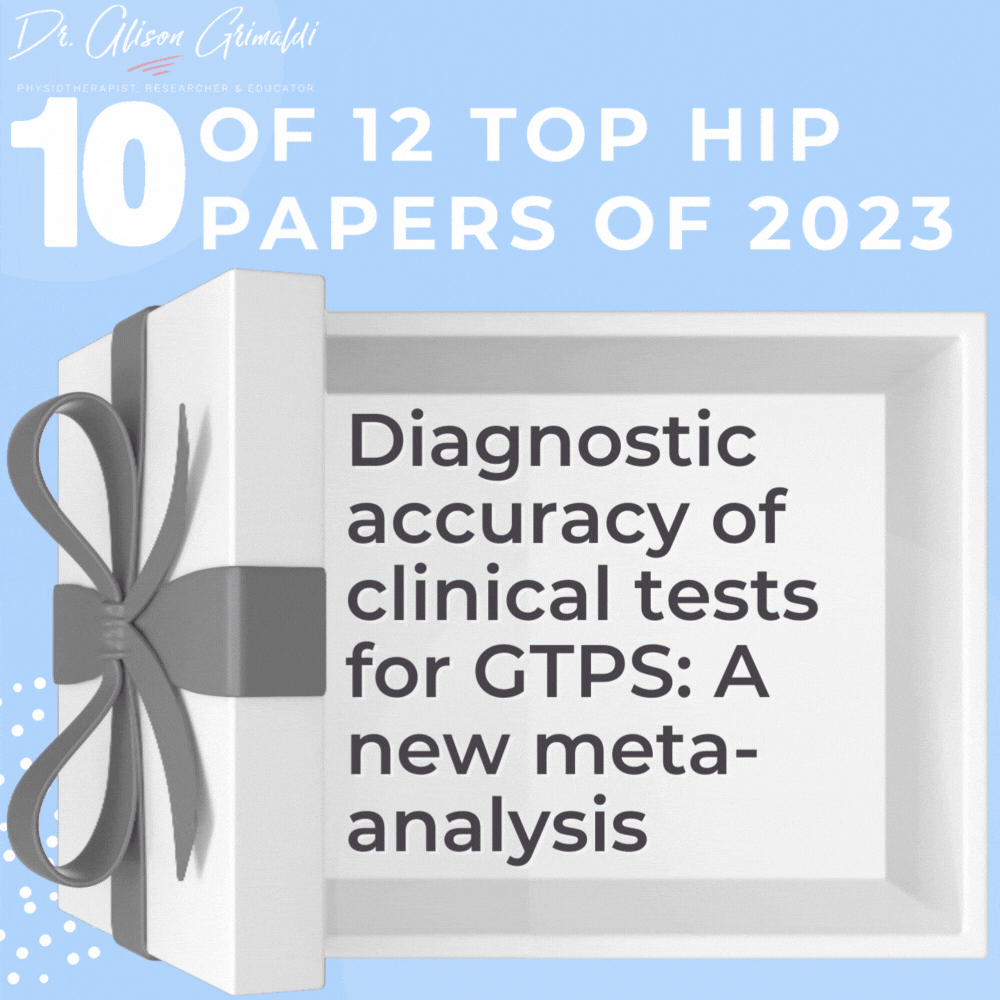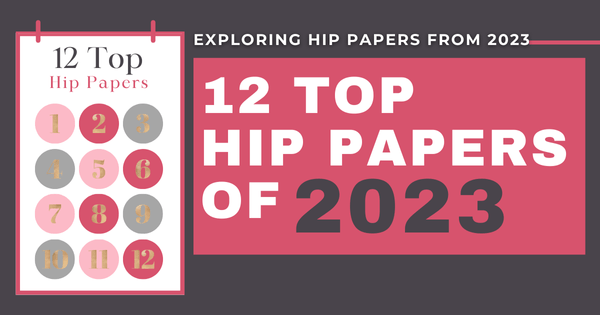9 of 12 Top Hip Papers of 2023 | Sex-specific cam location in FAIS

Welcome back to my 12 Top Hip Papers of 2023 series of miniblogs, where I walk you through what has been happening in the hip world over 2023. We are at Day 9! If you missed day 8, you'll find a link at the bottom of this page to take you back. For day 9 we'll be taking a look at a paper that revealed sex-specific cam location in FAIS patients. Read more about what this means for FAIS in females.
Discover our Anterior Hip & Groin Pain Course
If you enjoyed this blog, you might like to take the online course on Anterior Hip & Groin Pain - 5 hours of guided online video content. Better your skills and understanding of the anterior hip and groin and become equipped with the knowledge to administer clinical diagnostic tests and management strategies.

For your convenience, we have also developed this content into a FREE 31-page full colour ebook!
Packed full of 12 Top Hip Papers - peer reviewed scientific papers from 2023, that have contributed to our understanding of hip conditions and/or the assessment or management of hip pain or injury.

9 of 12 Top Hip Papers of 2023 : Sex-specific cam location in FAIS1
Cam morphology is a significant risk factor for the development of painful hip impingement - Femoroacetabular Impingement Syndrome (FAIS), but there is little information about sex-specific cam location in FAIS or differences in cam shape or size. This could have implications for development of FAIS and detecting cam morphology on imaging.
Study Aim:
The aims of the study were to
- assess differences in shape and location of cam morphology in female and male patients with FAIS, and
- determine whether there were sex differences, based on stratification of cam volume (negligible, mild, moderate, or major).
What was done:
- In this study, cam location and shape in patients with FAIS (M:F 56:41, age: 16-63 years) were determined using MRI and 3D focused shape modeling software.
- Sex differences in size and location of primary cam morpology were analysed.
Key findings regarding sex-specific cam location in FAIS:
- In FAIS patients with negligible, mild, or moderate cam volumes, cam morphologies were:
- larger in males
- located more superiorly in males
- located more anteriorly in females
- Both male and female patients with major cam volumes had more global cam distribution.
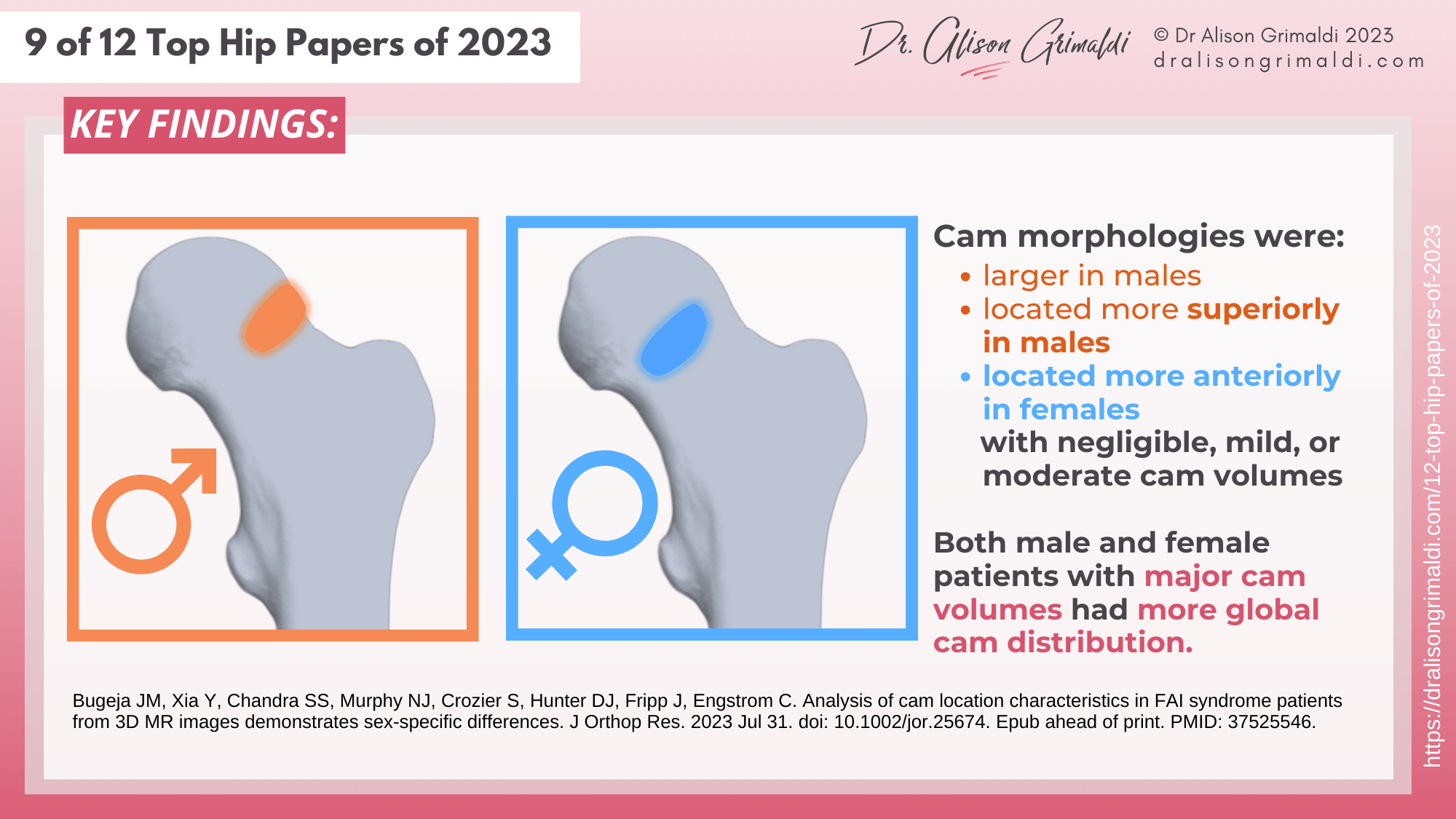
Clinical Implications:
- An anteriorly located cam in females may be related to different biomechanics and clinical presentation e.g., range of impingement.
- An anteriorly located cam is not usually observable on AP/coronal imaging. Oblique views may be required to appreciate cam morphology in females. Reliance on coronal plane imaging may underestimate the prevalance of cam morphology in females.
Cam morphology is a significant risk factor for the development of Femoroacetabular Impingement Syndrome and hip osteoarthritis. Understanding sex differences in morphology may have implications for development of pain, pathology, understanding of prevalence and application of imaging techniques.
Cam morphologies were on average larger in males, with greater height and overall volume. Location was also different. Most cam morphologies were located more superiorly in males and more anteriorly in females, except major cam morphologies that were more global in distribution. An anterior cam location in females may be linked with biomechanics and clinical presentation, in terms of range of joint impingement. This, together with smaller cam volumes, may possibly reduce the joint impact in females.
Coronal plane imaging may underestimate the prevalence of cam morphology in females, due to this anterior cam location - it won't be visible on an AP image. This means we are not really sure of the prevalence of cam morphology in females, as many large prevalence studies have been performed on AP Xrays. It also means that if you suspect a female patient may have FAIS, you will need to order some oblique/lateral views, or the gold standard is radial assessment of the femoral neck with MRI.
Like to learn more about assessment and management of femoroacetabular impingement syndrome?
In this course, you can find detailed information on pathoaetiology, assessment and management of FAIS and many other joint, soft tissue and nerve related conditions. To learn more, take the anterior hip and groin pain online course, or join me in an online or practical anterior hip and groin pain workshop.
This online course is included in Hip Academy and Hip Academy members receive discounts for online workshops.
I hope you enjoyed the infographics and key learnings from Day 9 of my 12 Top Hip Papers of 2023. There are 3 more papers in this series, so use the navigational graphics below, to see what other top papers and infographics I have for you!

Have you heard about Hip Academy?
Enjoy the benefits of a world class educational Hip Program, specifically designed by Dr Alison Grimaldi to help improve your knowledge surrounding the Hip and Pelvis, and become an expert in your field.
With all Hip Courses included, enjoy all the extra inclusions, including; access to the entire eBook series, growing video library, expanding PDF resource centre, regular member meetings, forums + lots more!

